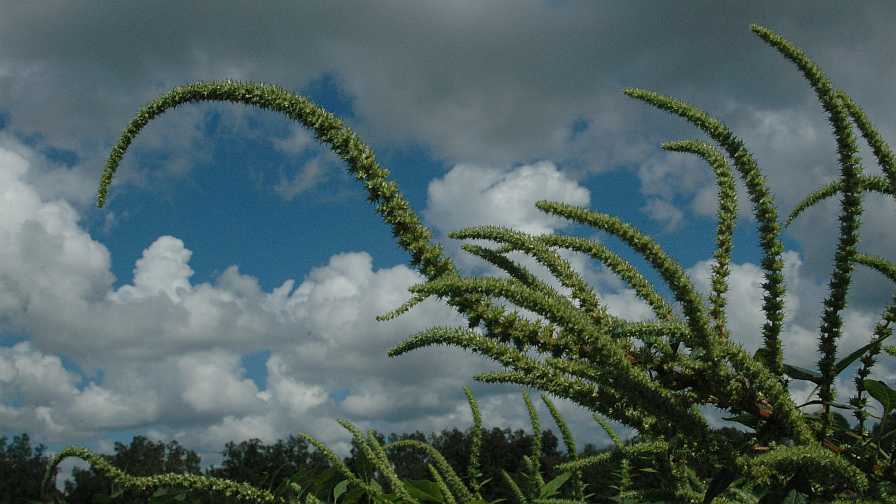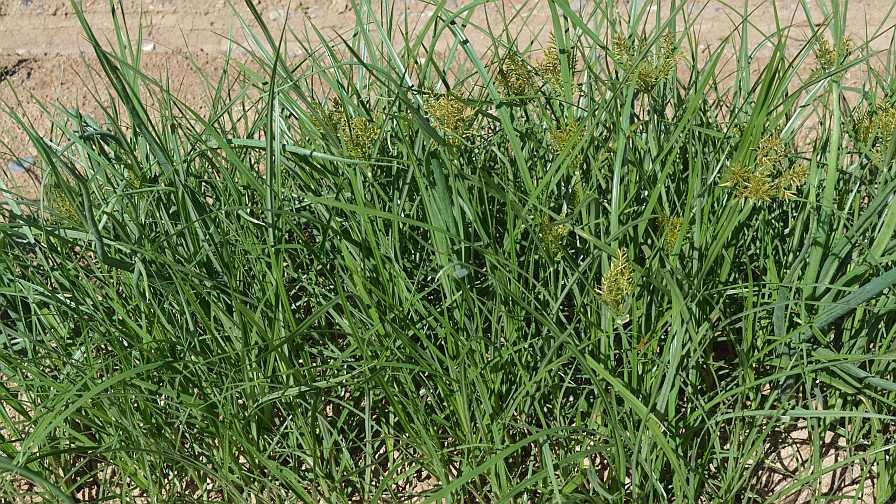Terrifying Facts About Weeds Every Farmer Should Know

Among the most troublesome weeds for North American farmers is Palmer amaranth, which can produce up to 1 million seed per plant.
Photo by Joseph LaForest
If you ask a grower what is his or her biggest production challenges on the farm, a top response will be weeds. And some statistics about common weed pests can be jaw dropping, illustrating why they present the problems they do on farms.
The Weed Science Society of America focuses on educating growers about weeds and their management. They have compiled and shared some pretty amazing facts about weeds. But, the most apparent, wallet-emptying fact for a grower is that weeds cause more yield loss and add more to farmers’ production costs than insects, diseases, rodents, birds, deer and other grazers.
One of the reasons weeds can be such a big challenge is their prolific nature. For instance, Palmer amaranth has been found to produce up to one million seed per plant. And, once one of those seeds germinates in good growing conditions, the weed can grow 2 inches to 3 inches per day. Considering the effectiveness of most foliar herbicides is highly reduced after the weed reaches 4 inches tall, the window to control potentially millions of weeds in a field is small. Throw in the fact resistance to glyphosate is quickly spreading in Palmer amaranth, the challenge gets even more daunting.
What about nutsedge? For vegetable growers, it is considered one of the most troublesome weeds. Given the weed sprouts from tubers below the ground, they are even more difficult to control. Purple nutsedge can produce tons of tubers and rhizomes per year. As many as 600 plants can be produced by a single tuber in a year.
Longevity Challenge
Another issue that makes many weeds problematic is the ability of seed to remain viable for years in some cases. Many seeds of most annual grasses die after about three years, but researchers have found some broadleaf weed seeds can produce after many decades.
According to WSSA, one of the most famous experiments dates back to 1879 when Professor William Beal took freshly grown seed from 20 common weed species. He buried the seed in sand-filled bottles at 3 feet in depth. At five-to 10-year cycles, he would dig bottles up to see if seed remained viable. Throughout his career, many seeds did.
When Beal retired, he passed the experiment on to researchers at Michigan State University. More than 139 years after he begin the experiment, many of the seeds planted are still able to germinate.
Given one estimate suggests that 1 acre of U.S. cropland contains 50 million to 300 million buried weed seeds, with about 5% to 10% of those seed germinating and emerging each year, there is plenty of ammo in the weed arsenal.

Nutsedge is a major challenge that is difficult to control for many Florida vegetable growers.
Photo by Howard Schwartz
Have Seed, Will Travel
Another reason weeds are atop the food chain of farmers’ biggest headaches is their ability to move. They can spread via wind and rain. In fact, the small seed from the horseweed plant have been shown to travel 300 miles by wind. A single horseweed plant can produce 200,000 seed, so it is one that will spread far, wide, and fast. The weed was among the first to become resistant to glyphosate, which presented a big problem because of the seed’s wind-driven nature. Even growers practicing good herbicide resistance-management got the problem blown into their fields from fields miles away.
Animals don’t help the cause either. Seeds can be deposited from the bellies of various birds and animals like livestock in piles of perfect fertilizer. Or, seeds, with burs can attach to fur or clothing to move plants to new locations. Even earthworms get in on the act by collecting seeds and moving them into burrows. Scientists conclude that more than two-thirds of all giant ragweed seedlings emerge from earthworm burrows.
Some weeds can move on their own. Take the aquatic plant hydrilla, which clog many irrigation ditches and ponds in Florida. One 4-inch shoot can grow by 267 feet in only 35 days.
When it comes to seed movement, one area growers can control is cleaning equipment regularly to stop the spread of weed seed from field to field; and by purchasing clean transplants and liners.
Conclusion
The fight against weeds on the farm is not going to get any easier, especially in a climate like Florida’s where it is so conducive for plant growth. So, the best a grower can do is scout for weed development and act fast with the cultural and chemical controls available to mange the weed as efficiently as possible.
Growers also should be good stewards of the chemical control options they have to help avoid resistance. And, finally work with researchers from institutions like UF/IFAS and USDA to further advances in weed control technology and techniques. And last, but not least, there’s always a hoe.










